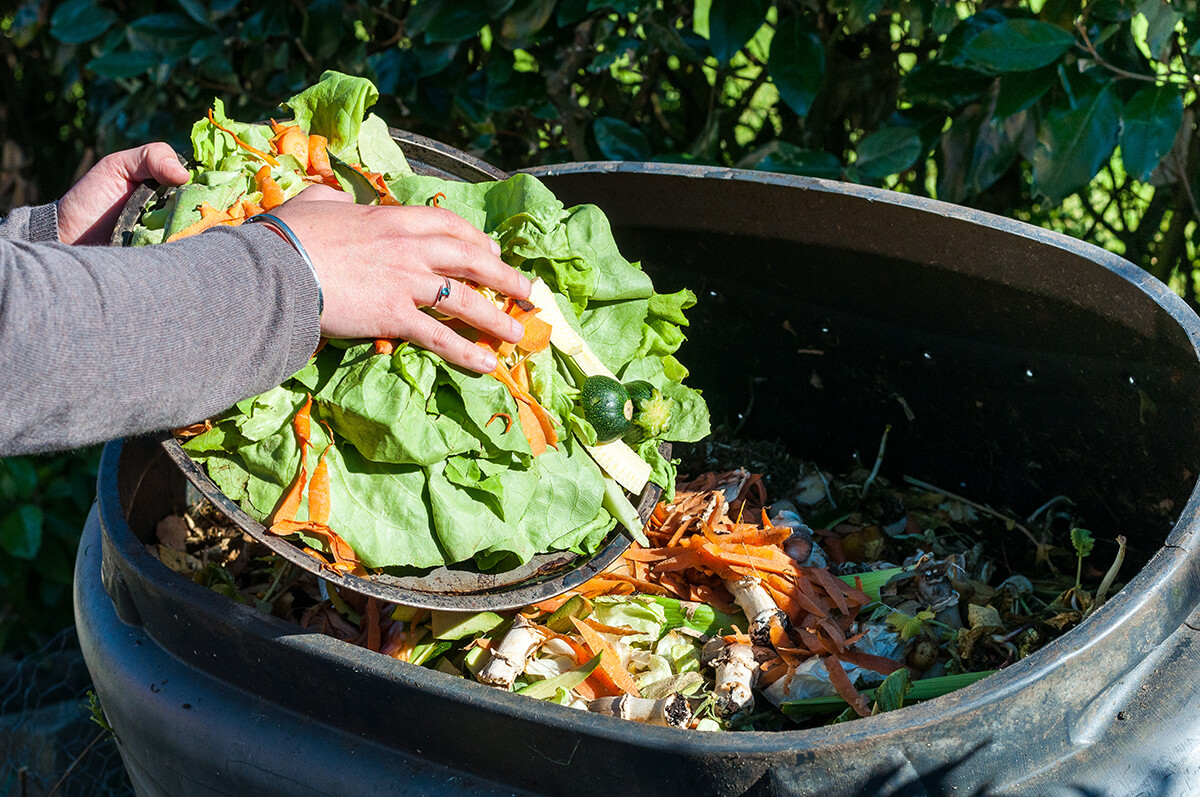
If you’ve been researching ways to live a greener lifestyle, you may have come across the word “composting” quite a bit. Many environmental advocates recommend composting in your home to reduce your family’s carbon footprint. But, what is composting? How is it done? Here’s everything you need to know:
What is Composting?
Composting is the natural process of breaking down organic materials into a rich soil. Any waste that was once alive can be added to your compost pile, including fruits, vegetables, garden pruning, eggshells, tissues, paper towels and more. Starting a compost pile in your backyard can help return beneficial nutrients into your yard’s soil and reduce the waste you produce in your home.
How to Start Composting
First, you will need to find a container suitable for composting at home. Some retailers sell bins designed specifically for composting, but if you don’t want to spend money on a bin, try to find a wooden container that is at least 3 ft. x 3 ft. Find a good, shady spot for your bin in your backyard. Keep in mind the compost will begin to smell once it breaks down, so you don’t want to keep the bin too close to your home.
Once you have your bin set up, it’s time to start adding the compost material. But, before you stat throwing organic waste into the bin, remember it’s important to maintain a balance of green and brown waste. Green waste includes grass clippings, vegetable peels, eggshells and other kitchen waste. Brown waste includes branches, wood chips, straw, and other yard waste. Try to keep a 50-50 mix of green and brown waste to create the perfect compost.
Now, sit back and wait for your compost to be ready. As previously mentioned, compost can be quite smelly, but if you think the smell has gotten out of control, this could be a sign you need to add more brown waste to the mixture. Dig a small hole in the pile to add more brown material and stir it thoroughly so it can combine with the existing mixture.
But even if it doesn’t smell, you can continue to add more waste to the mixture as you have it. It will take anywhere between nine months to a year for your compost to be ready, so don’t expect this to happen overnight! The compost is ready when it has turned into a dark, thick, moist soil with a fresh smell. You may notice tiny bits of eggshells or twigs still visible in the compost. This is not a sign the compost is not ready, so don’t shy away from using it.
How to Use Compost
Now that you have created a compost pile and waited patiently for it to be ready over the last several months, what do you do with the finished product? Compost can be used in a variety of places in your backyard, including in flowerbeds, around trees, or in potted plants. It can even be used as mulch over flowerbeds or in shrubby areas of your backyard. Compost can help your plants get the nutrients they need to flourish in your yard and fend off pests and diseases. Once you begin to use compost, you may notice your grass looks greener and your plants look stronger and healthier.
As you can see, it just takes a few minutes to start a compost pile. Although it takes months for the compost to be ready, the benefits are well worth the wait!